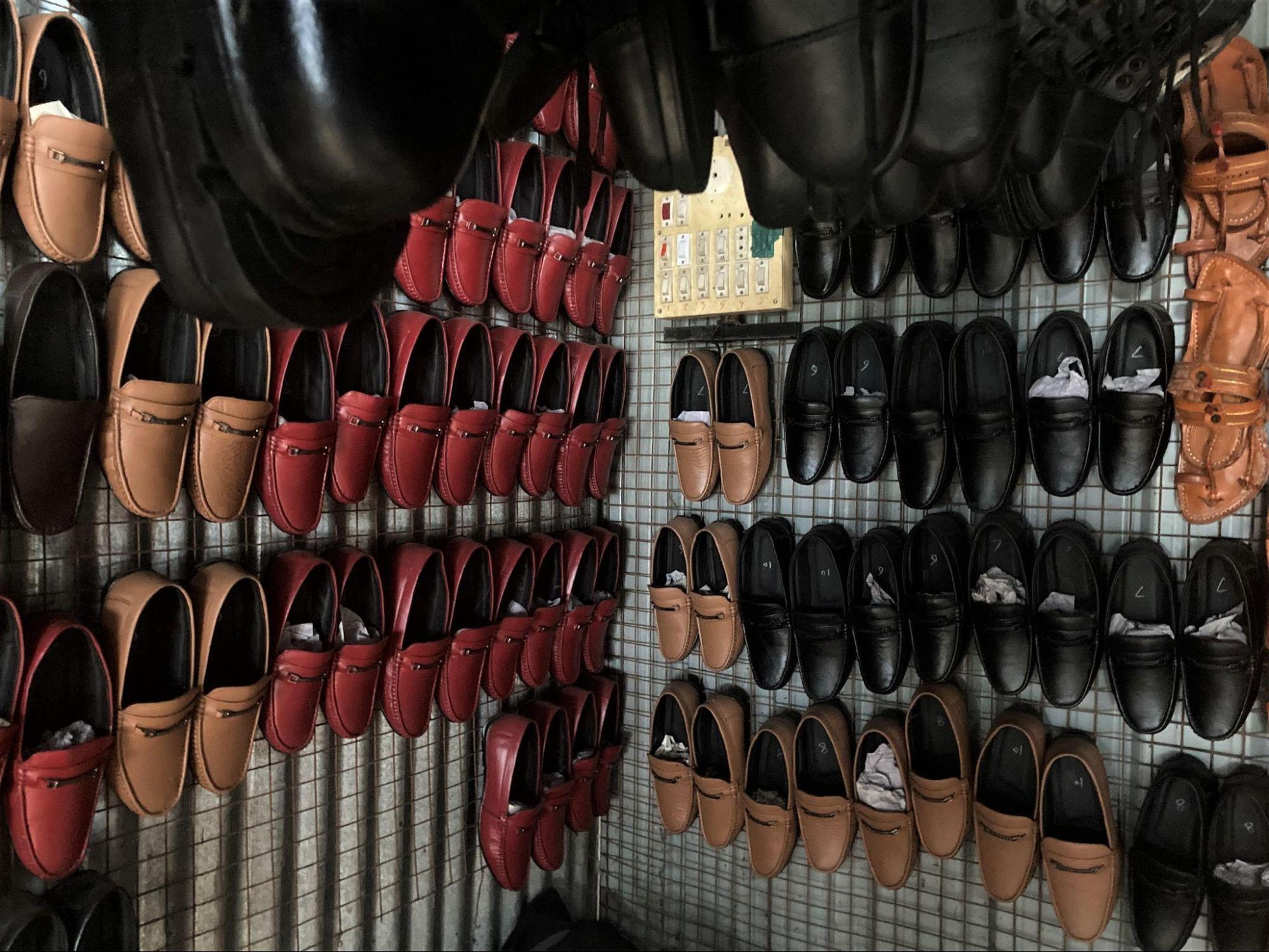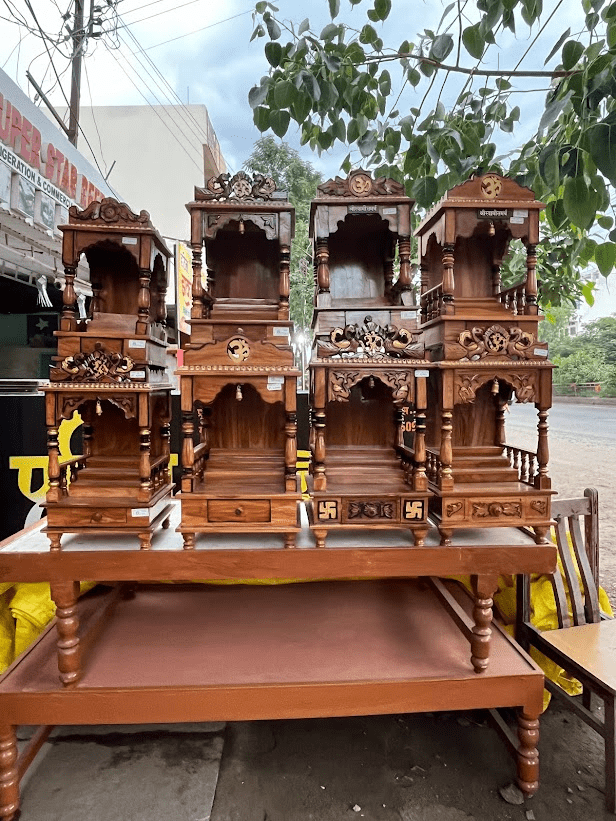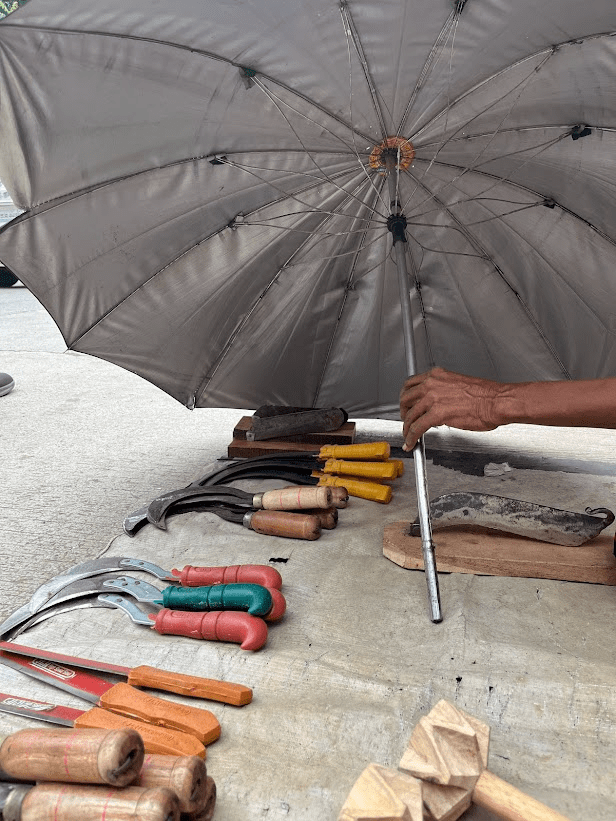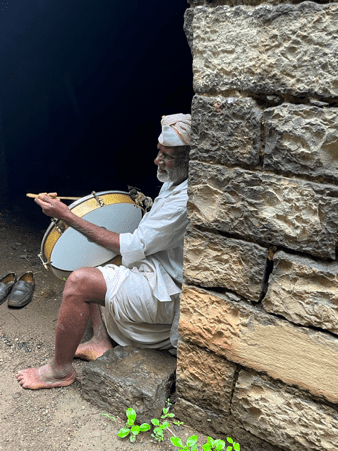LATUR
Artforms
Last updated on 22 July 2025. Help us improve the information on this page by clicking on suggest edits or writing to us.
Godhadi
Godhadi, or hand-sewn quilt, is a traditional Indian handicraft that involves layering cloth scraps to create patterned textiles. Widely practiced in Indian households, this form of textile work has long served as a medium of domestic artistry, particularly among women. In the villages of Latur district, godhadi-making has been part of everyday life for generations. While godhadi-making has traditionally been part of household practices, more structured initiatives to promote it as a source of livelihood for women in Latur’s rural areas have been established since 2017.
To support this effort, a self-help group named Ruma (short for Rural Maharashtra) was established. Akanksha Agnihotri (2023) mentions how the project supports 35 women aged 18 to 60, including some who are speech and hearing impaired, from Ansarwada and surrounding hamlets in Nilanga tehsil. Alongside godhadis, these women also sew cloth bags and toys. Their work can be bought and seen UMED Rural Livelihood Mission organizes exhibitions where these handicrafts are showcased.
Leather Footwear
Leather footwear is a notable handicraft in Latur, with artisans engaged in its production across generations. Craftsmen use leather sourced from Chennai, with cutting and stitching primarily carried out in Chakur.

Certain stages of production incorporate mechanized processes. While traditionally focused on Kolhapuri-style chappals, local artisans now produce a variety of leather footwear to meet changing market demands.


Woodwork
Wooden handicrafts are commonly produced and sold throughout Latur district. These include functional items such as tables and chairs, as well as carved wooden mandirs.


Kitchen Tools
The Ghisadi community in Latur engages in the production of iron tools, including kitchen and gardening implements. Tools are fashioned from scrap iron sourced from Ganj Golai Market and are shaped and polished using traditional techniques, combining iron with wooden handles.


Creative Spaces of the District
Dagadojirao Deshmukh Auditorium
![Dagadojirao Deshmukh Auditorium, one of the oldest theaters in Latur[1]](/media/culture/images/maharashtra/latur/artforms/dagadojirao-deshmukh-auditorium-one-of-the-old_ujpE2JQ.png)
The Dagadojirao Deshmukh Auditorium is regarded as one of the oldest theaters in Latur. It has long been a vital venue for watching plays and supporting local artists and theater enthusiasts. However, many residents are increasingly concerned about the theater's growing dilapidated state, fearing that its historic charm and cultural significance may be lost if not addressed.
Instruments
Dhols
Percussion instruments, particularly dhols, are integral to festivals and celebrations in Latur. Notably, locals say that the district has a long tradition of crafting these drums, which are used across a range of events including weddings and religious processions.

Artists
Mangesh Nipankar
Mangesh Nipankar is an artist from Latur district, known for his work in Rangoli and crop art. His artistic projects often draw on cultural themes and have gained attention for their large scale and use of traditional materials.
![A large-scale Rangoli design of Chhatrapati Shivaji Maharaj created by a team of artists including Mangesh Nipankar.[2]](/media/culture/images/maharashtra/latur/artforms/a-large-scale-rangoli-design-of-chhatrapati-sh_OMy5nvl.png)
In 2019, Nipankar participated in a team of 125 artists that created a large Rangoli depiction of Chhatrapati Shivaji Maharaj, which received national recognition and was noted for its intricate design and scale.
In 2020, Nipankar created a piece of crop art to commemorate Chhatrapati Shivaji Maharaj Jayanti. Utilizing approximately 2,500 kg of seeds, he crafted a large-scale image of Shivaji Maharaj over an area of six acres in Nilanga village, Latur district. The project combined agricultural methods with visual art and was completed shortly before the celebration. The artwork later gained wider attention after it was visible via satellite imagery on digital mapping platforms.
The crop art also highlighted broader issues affecting the region, such as drought and farmer distress, which are frequently topics of national discussion in relation to Latur. Nipankar’s work has been noted for linking artistic expression with themes of agriculture, local heritage, and community identity.
![Aerial view of crop art installation by Mangesh Nipankar, later visible on satellite mapping platforms.[3]](/media/culture/images/maharashtra/latur/artforms/aerial-view-of-crop-art-installation-by-manges_9QCpLCG.png)
Riteish Deshmukh
![Riteish Deshmukh[4]](/media/culture/images/maharashtra/latur/artforms/riteish-deshmukh4-74ad0bc1.png)
Riteish Deshmukh is an actor, producer, and architect. He was born in Latur, into a family active in the state’s political landscape. His father, Vilasrao Deshmukh, served as the Chief Minister of Maharashtra in 1999–2003 and 2004–2008.
Deshmukh made his acting debut in 2003 with the film Tujhe Meri Kasam, directed by K. Vijaya Bhaskar. He has appeared in various film genres, including comedies, dramas, and action films, and is known for his roles in popular film series such as Housefull and Golmaal. In addition to acting, he has worked as a producer in the Indian film industry.
Sources
Akanksha Agnihotri. 2023.From tradition to livelihood: Rural women in Latur keep the dying art of quilting alive. Hindustan Times.https://www.hindustantimes.com/lifestyle/art…
Dailybite. 2019.Shivaji crop art in Latur village visible on Google Maps amid drought discussions. DailyO.https://www.dailyo.in/variety/shivaji-crop-a…
Lokmat. 2018.Crowd gathers to see giant Rangoli image of Shivaji Maharaj. Lokmat.https://www.lokmat.com/latur/crowd-gathered-…
Riteish Deshmukh – IMDb Profile. IMDb.https://www.imdb.com/name/nm1299011/
Last updated on 22 July 2025. Help us improve the information on this page by clicking on suggest edits or writing to us.